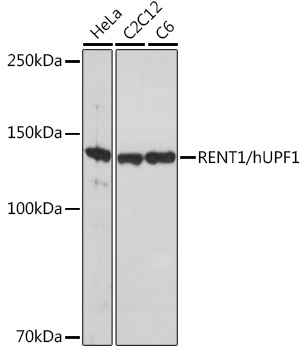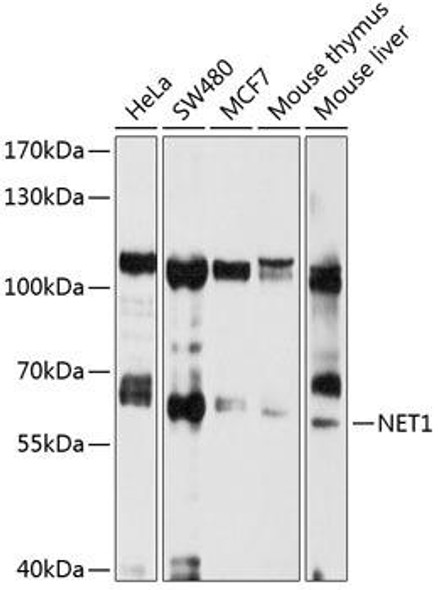| UniProt Protein Function: | RNA-dependent helicase and ATPase required for nonsense-mediated decay (NMD) of mRNAs containing premature stop codons. Is recruited to mRNAs upon translation termination and undergoes a cycle of phosphorylation and dephosphorylation; its phosphorylation appears to be a key step in NMD. Recruited by release factors to stalled ribosomes together with the SMG1C protein kinase complex to form the transient SURF (SMG1-UPF1-eRF1-eRF3) complex. In EJC-dependent NMD, the SURF complex associates with the exon junction complex (EJC) (located 50-55 or more nucleotides downstream from the termination codon) through UPF2 and allows the formation of an UPF1-UPF2-UPF3 surveillance complex which is believed to activate NMD. Phosphorylated UPF1 is recognized by EST1B/SMG5, SMG6 and SMG7 which are thought to provide a link to the mRNA degradation machinery involving exonucleolytic and endonucleolytic pathways, and to serve as adapters to protein phosphatase 2A (PP2A), thereby triggering UPF1 dephosphorylation and allowing the recycling of NMD factors. UPF1 can also activate NMD without UPF2 or UPF3, and in the absence of the NMD-enhancing downstream EJC indicative for alternative NMD pathways. Plays a role in replication-dependent histone mRNA degradation at the end of phase S; the function is independent of UPF2. For the recognition of premature termination codons (PTC) and initiation of NMD a competitive interaction between UPF1 and PABPC1 with the ribosome-bound release factors is proposed. The ATPase activity of UPF1 is required for disassembly of mRNPs undergoing NMD. Essential for embryonic viability. |
| NCBI Summary: | This gene encodes a protein that is part of a post-splicing multiprotein complex involved in both mRNA nuclear export and mRNA surveillance. mRNA surveillance detects exported mRNAs with truncated open reading frames and initiates nonsense-mediated mRNA decay (NMD). When translation ends upstream from the last exon-exon junction, this triggers NMD to degrade mRNAs containing premature stop codons. This protein is located only in the cytoplasm. When translation ends, it interacts with the protein that is a functional homolog of yeast Upf2p to trigger mRNA decapping. Use of multiple polyadenylation sites has been noted for this gene. Alternative splicing results in multiple transcript variants. [provided by RefSeq, Jul 2014] |
| UniProt Code: | Q92900 |
| NCBI GenInfo Identifier: | 17380291 |
| NCBI Gene ID: | 5976 |
| NCBI Accession: | Q92900.2 |
| UniProt Secondary Accession: | Q92900,O00239, O43343, Q86Z25, Q92842, |
| UniProt Related Accession: | Q92900 |
| Molecular Weight: | 143 kDa |
| NCBI Full Name: | Regulator of nonsense transcripts 1 |
| NCBI Synonym Full Names: | UPF1, RNA helicase and ATPase |
| NCBI Official Symbol: | UPF1 |
| NCBI Official Synonym Symbols: | HUPF1; NORF1; RENT1; smg-2; pNORF1 |
| NCBI Protein Information: | regulator of nonsense transcripts 1 |
| UniProt Protein Name: | Regulator of nonsense transcripts 1 |
| UniProt Synonym Protein Names: | ATP-dependent helicase RENT1; Nonsense mRNA reducing factor 1; NORF1; Up-frameshift suppressor 1 homolog; hUpf1 |
| Protein Family: | ATP-dependent helicase |
| UniProt Gene Name: | UPF1 |











